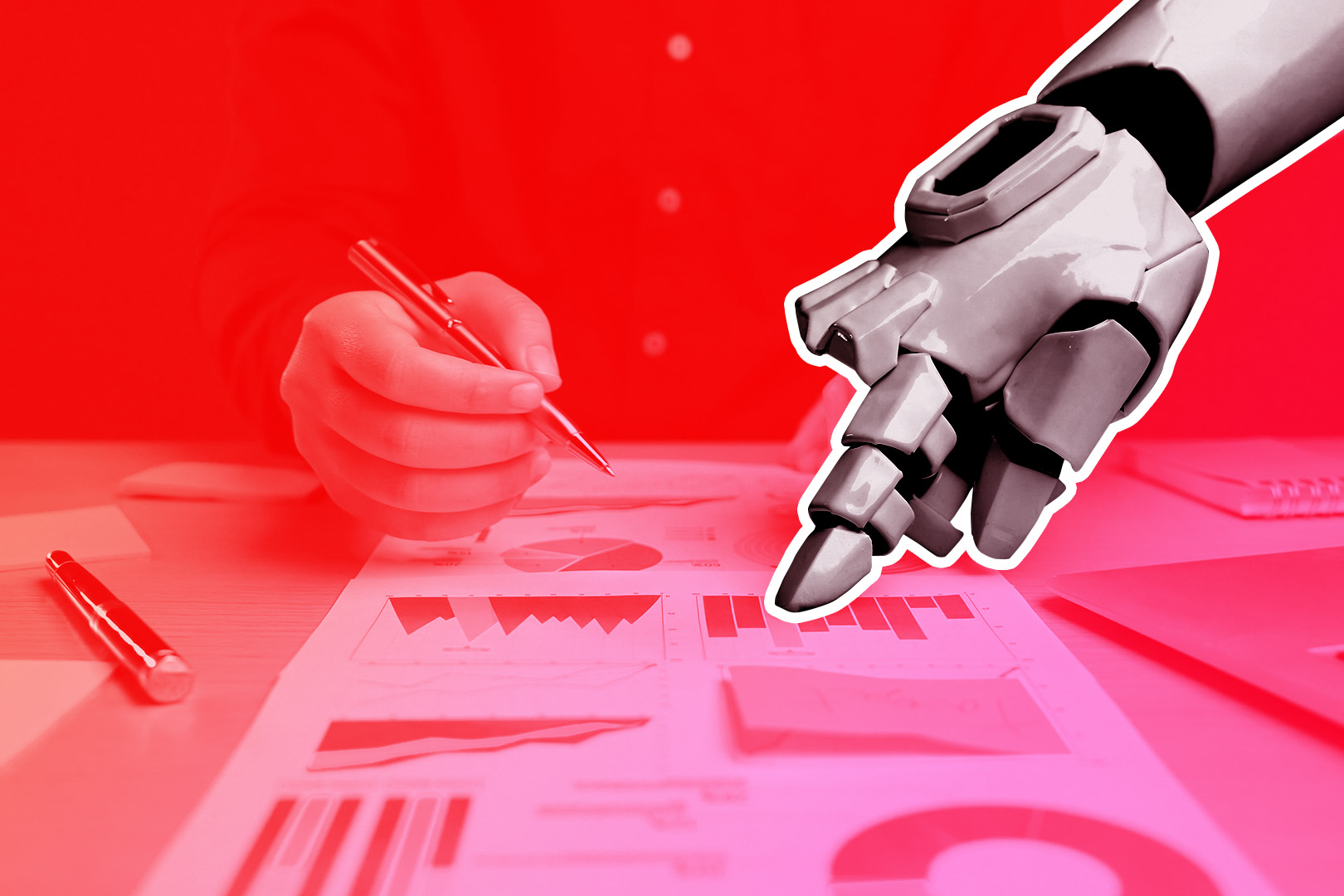
Sales Performance Management 101: Lead Your Sales Team to Greater Success
As a sales leader, you're asked to motivate, train, and support sales reps, increase company revenue, and work with other departments to accomplish organizational goals.
It's not an easy job, so a solid commitment to sales performance management (SPM) is essential to your success in 2024 and beyond.
In this comprehensive article, I'll explain sales performance management and why it's beneficial. Then, I'll discuss the six components of every successful SPM process, how to leverage sales-related technologies to help you with SPM, and best practices to keep in mind.
I have a virtual truckload of information to share with you, so let's jump in and get started!
What is Sales Performance Management?
Basically, sales performance management is what sales leaders like you do to ensure their sales teams work hard, drive revenue, and consistently achieve department goals.
Benefits of Effective Sales Performance Management
I know what you're thinking:
"Ugh, sales performance management sounds messy. Do I really have to do it? Maybe I won't and say I did?"
I hear you. But here's the truth: sales performance management isn't as scary as it sounds. In fact, when you're done reading this article, you’ll be an SPM ninja—guaranteed.
Even better, once you achieve this prestigious title, you'll enjoy a bunch of benefits, such as:
- Greater operational efficiency
- Much shorter sales cycles
- Fewer head-pounding errors
- Better resource allocation
- Faster sales territory management
- Detailed sales analysis workflows
- More accurate sales forecasting
- Happier, well-trained salespeople
Look at that list again and tell me you don't want those things. All you have to do to experience them is build a stellar SPM process.
Hey, go-getter! Transform your skills with in-depth sales manager training insights featured in our article.
Key Components of Successful Sales Performance Management
Want to build an effective sales performance management process for your company?
Make sure you include the six key components I cover in this section. Each is important and will help you lead your salespeople to the success you've all worked hard to achieve.
Setting Clear and Measurable Sales Goals
First, identify your goals.
What do you want your SPM process to achieve? Viable answers include "consistent sales quota attainment," "higher team-wide conversion rates," and "more sales and revenue."
Whatever goals you decide to chase, make sure they're SMART: Specific, Measurable, Attainable, Relevant, and Time-Bound. Let's take a closer look at each of these:
- Specific: First, make sure your goals are specific. You and the rest of your team should know exactly what you're trying to accomplish. Example: "We want to grow revenue by investing in new sales tools to increase rep productivity."
- Measurable: Specific goals are great. Specific and measurable goals are way better. Why? Because measurable goals will allow you to track progress. Example: "We want to grow revenue by 10 percent by investing in new sales tools to increase rep productivity."
- Attainable: Only set goals your sales team can achieve. Unrealistic objectives create stress, lower morale, and kill retention rates. Example: "We want to grow revenue by 5 percent by investing in new sales tools to increase rep productivity."
- Relevant: Ask yourself, "Why am I setting this goal?" Every goal should help accomplish overarching company objectives. Example: "We want to grow revenue by 5 percent by investing in new sales tools to increase rep productivity. That way, our company can fund additional product development initiatives in the near future."
- Time-Bound: Finally, decide when your team needs to accomplish each goal. If you don't, you open the door to procrastination. Example: "We want to grow revenue by five percent in Q3 by investing in new sales tools to increase rep productivity. That way, our company can fund additional product development initiatives at the end of the year."
Did you set goals? Good, now share them with your sales team. This will allow every team member to benchmark their progress and make sure they're heading in the right direction.
Seeking a competitive edge in sales? Check out our roundup of the best sales productivity tools for a winning advantage.
Tracking Sales Performance Metrics and KPIs
Now that you know what you want your SPM efforts to achieve, you can choose specific sales metrics and KPIs to track. Here are a few ideas:
- Quota attainment: How many reps hit their sales targets?
- Conversion rates: How often do your reps close deals?
- Overall revenue: How much money does your sales team generate?
- Acquisition costs: How much does it cost to acquire a new customer?
- Rep productivity: How quickly do your reps hit their quotas every month?
Thankfully, there are a ton of tools you can use to access real-time data. We'll talk about a few of them in a later section of this article. For now, just know that you don't have to tabulate your metrics in an Excel spreadsheet. Sales performance optimization is way easier these days.

Conducting Regular Sales Performance Evaluations
Are you on track to meet your productivity, performance, and revenue goals? Sales rep evaluations can help you answer this question clearly and confidently.
Of course, it takes skill to conduct an effective performance review. You have to stay objective. Personal feelings will cloud your judgment. Assess each rep's performance, good and bad. Do not critique their personality, fashion sense, or other random attributes.
You also need to deliver feedback in a constructive way. Team members don't want to hear about their failures, especially if they're told about them in a condescending and harmful way. Tell your reps what they need to know using a friendly and encouraging attitude.
Lastly, make performance reviews a consistent part of your sales strategy. Annual reviews won't help your team hit its sales targets and revenue goals. They're too infrequent. Monthly reviews, however, will give reps consistent feedback, enabling them to improve performance.
Providing Sales Training, Coaching, and Support
You're the sales manager. The top dog. The big kahuna.
Your sales team looks to you for training, coaching, and support. If you want your sales department to meet—or even exceed—its sales goals, you better be prepared to deliver.
Initial training, frequent coaching, and continuous support will help your reps improve their skills, enabling them to close more deals. It will also help reps boost their sales productivity levels, which will help them close deals faster. Hello, revenue goals!
It's important to remember that every salesperson has different strengths and weaknesses. You'll need to assess the reps on your team individually and create tailored training programs to address their skill gaps. This is one reason why sales enablement is so important.
When reps have the resources they need to level up and the unwavering support of their superiors, their sales performance will improve. It's almost inevitable.
Creating Effective Sales Incentives Programs
One of the best ways to hit sales goals is to incentivize sales reps. Every sales performance management strategy should include a stellar incentives program.
Sales incentives come in all shapes and sizes. There's cold hard cash, gift cards, physical items, professional courses, entertaining experiences, additional PTO, company-wide recognition, improved office spaces… The list goes on and on.
Your department's incentives program should align with company goals. For example, don't promise reps a swanky, weeks-long vacation to Tahiti to hit their sales targets if your company wants to raise capital. The expense of this incentive doesn't match the goal.
(Unless you sell jets. If one sale nets your company millions of dollars, I permit you to offer your reps a baller Tahitian vacation. Heck, offer 'em two. They've earned it.)
At the same time, your incentives need to be something your reps actually desire. For instance, don't offer your reps an improved office space if they work from home.
Developing Competitive Compensation Structures
Finally, settle on a rock-solid compensation plan.
Incentives are all well and good, but your reps need competitive base salaries and inspiring commission structures if you want them to reach peak performance on a daily basis.
Here are five tips for creating a compensation plan that works for your unique company:
- Research your industry: What do your competitors pay their sales reps?
- Choose a compensation structure: Will you pay your reps a base salary, or will they be commission only? Maybe you'd like to experiment with a tiered or residual program.
- Base commission rates on experience: Offer veteran salespeople higher commission rates than newbies. Why? Because veteran reps are often better at their jobs, which means they'll close more deals. They should also be rewarded for their loyalty.
- Set sales quotas and commission caps: Quota management is an important aspect of sales leadership. You need to stretch your reps. That way, they work hard to attain their goals. But don't break their spirits in the process. Also, consider setting commission caps, which will eliminate overly high commission costs for your company.
- Decide when payouts happen: Lastly, choose when you'll pay reps the commissions they've earned. Most reps prefer weekly payouts, so keep that in mind.
At the end of the day, your compensation plan should be fair and transparent. If it's not, you'll have a hard time keeping reps on your team, let alone motivating them to perform.
Leveraging Sales Performance Analytics and Technology
As with most things, technology can make the sales performance management process easier. Like, way easier. Let's talk about a few tools you might want to use:
Utilizing Analytics Tools for Data-driven Decision Making
The sales industry runs on data. The more you know about your target audience and their distinct buying habits, the easier it will be for you and your team to close deals.
When it comes to sales performance management, there are many tools on the market—many of which will help you leverage data to spot trends in your sales pipeline and improve your decision-making processes. Here are a few of my favorite tools in this category:
- Close: As CRM software, Close has the tools to supercharge your sales process, like automated email marketing workflows, sales activity reports, deep analytics dashboards, in-call coaching capabilities, and even a team-wide leaderboard feature. It's also super user-friendly, which will save you time. Start your free trial here.

- Spiff: This commission management platform makes rewarding reps for their performance easy. Design comp plans, motivate sellers, and distribute funds from one convenient location. The best part is that Spiff prioritizes transparency, which builds trust.
- Xactly: Want to improve your sales planning processes? Perhaps you're looking for a pipeline management and sales forecasting tool. Maybe you need to access revenue intelligence to boost company profits. Xactly will help you do these things and more.
These are just a few SPM software options available to you in 2024. You and other key stakeholders in your company should research them and others to decide which is the best fit for your sales department. To help you make the right decision…
Choosing the Right Sales Performance Management Software
How do you choose the right sales performance management solution for your sales team? It won't be easy, but these four questions will help you zero in on the right tool.
What Features Do I Need?
Some SPM software has all of the bells and whistles. Others will help you accomplish very specific tasks. Decide which features you need to make your buying decision easier.
If you're a Close user, for example, you already have access to a variety of productivity, rep management, and sales analytics tools. So you might not need a bunch of other tools. Maybe just a commission platform like Spiff to calculate and distribute earnings to your sales team.
If you've turned Microsoft Excel into your CRM, you might want to invest in a more fully-featured solution to bridge the gaps in your process.
How Much Money Can I Spend?
Okay, let's talk pricing.
Once you've eliminated potential SPM tools based on features, ask yourself, "What's my budget?" Then only focus on platforms that fit your financial criteria.
You should not overspend in this area. Start with a modest piece of software that you can afford. Then, budget permitting, upgrade to a fancier solution in the future.
What Tools are Already in My Tech Stack?
Also, settle on an SPM software that integrates with your other tools.
This will streamline your sales process because you won't have to transfer data from one platform to another manually. The robots will do it for you, saving you time and ensuring accuracy.
(Worried your preferred SPM tool won't integrate with your current tech stack? Good news: most business apps connect to Zapier, which you can use to create custom integrations.)
What Do Other People Say about This Tool?
Finally, seek feedback.
Your list of potential tools consists of just a few apps. Each has the features you need, fits your budget, and integrates with the other solutions in your department's tech stack.
Before you make a final decision, find out what other people think about each SPM software. Read reviews on sites like G2 and Capterra. Ask your colleagues on LinkedIn if they have experience with these apps. Watch product demos and walkthroughs on YouTube (like our on-demand demo for Close).
When evaluating feedback, look for three things: First, does the app in question do what it says it will? Second, is the app easy to use, or do you need a degree in rocket science to operate it effectively? And third, is the customer support team helpful and friendly?
If the answer to any of these questions is no, consider a different tool.
Best Practices for Effective Sales Performance Management
At this point, you know what sales performance management is and why it's beneficial. You've also learned about the key components in every effective SPM strategy and which software you can use to simplify your SPM processes. Let's round things out with a few best practices:
Foster a Culture of Accountability and Continuous Improvement
Ideally, your salespeople will take ownership of their performance and realize that, ultimately, the only thing standing in the way of their success is themselves.
Once these thoughts take root in their minds, they'll work harder. They'll also look for ways to improve their skills regularly. Both of these things will result in more success for your sales department, which is the whole point of sales performance management.
Promote Collaboration and Knowledge Sharing Among Sales Teams
Sales teams achieve more when reps work together.
What do your top sellers do differently? Maybe they've mastered LinkedIn and use the platform to drive high-quality leads. Maybe they have a killer email script that regularly turns strangers into paying customers. Maybe it's something else entirely.
Ask them to share their secrets with their colleagues. That way, your entire department can drive more revenue and earn higher commissions.
Adapt Sales Performance Strategies for Continuous Success
Remember what I said earlier? Something about fostering a culture of continuous improvement within your sales department… The same thing goes for you, my friend.
The sales performance strategies you devise today might not work tomorrow. You need to monitor them regularly. As soon as they lose their effectiveness, change your approach. Implement a new plan to help your sales department outperform.
Overcoming Challenges in Sales Performance Management
I'm going to level with you: sales performance management isn't all rainbows and unicorns. This stuff is hard. You need to be prepared for the challenges in front of you, like:
- Combatting resistance to change: Your SPM plan will reveal inefficiencies in your sales process, which you'll want to fix ASAP. Just know that you'll face pushback. Your reps are comfortable with the status quo. They don't want to learn new workflows or use new software. To ease this transition, help them realize the benefits of your new approach. For example, once they're more productive, they'll close more deals and earn more money. Generally speaking, money is a great motivator for change.
- Dealing with underperforming sales reps: Not all salespeople are created equal. Some are natural sellers. Others work hard to learn the skills they need. Both are valuable additions to your sales team. But you'll also deal with reps who underperform for one reason or another. You need to determine if it's due to poor training or a lack of effort, then act accordingly. Just know that this aspect of your job won't be much fun.
One way to deal with the challenges above and improve your sales performance management processes is to use gamification. That's right, add a little fun to your work day!
Leaderboards, for instance, will help build a competitive atmosphere that drives reps to greater success. (Just make sure you encourage healthy competition, not cut-throat rivalries.)

As we discussed above, you can also use incentives to improve performance. Your reps will be more open to change and work harder if there's a valuable prize on the line.
Grow Your Company with Sales Performance Management
Here's the bottom line: every serious sales organization needs a reliable SPM process.
Once yours is in place, you'll enjoy greater operational efficiency, shorter sales cycles, faster-detailed sales analysis workflows, happier reps, and all the other benefits I mentioned.
Fortunately, implementing an SPM process isn't as scary as it sounds. You just need to cover the key components. As long as you set clear sales goals, track the right KPIs, conduct regular performance reviews, provide accessible training to reps, create effective incentive programs, and settle on a competitive compensation structure, you should be just fine.
Of course, the right technology can make building an effective sales performance management process for your company easier. That's why you should sign up for Close right now.
Start your free 14-day trial of Close today to access all of our platform's SPM features, such as detailed sales metrics, sales forecasting tools, rep leaderboards, and more.











